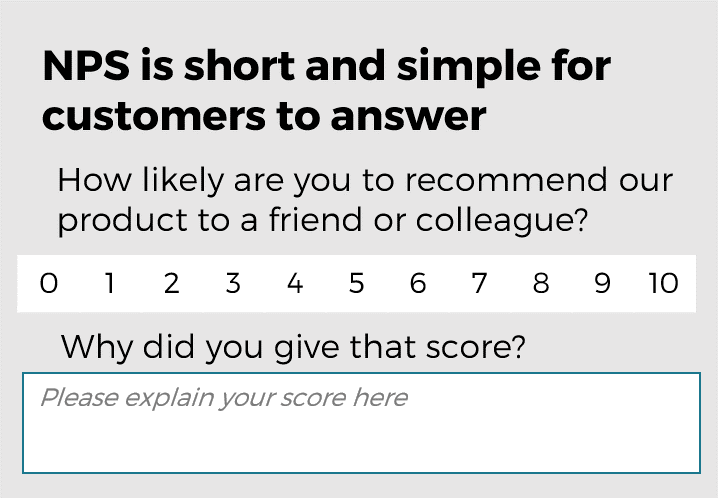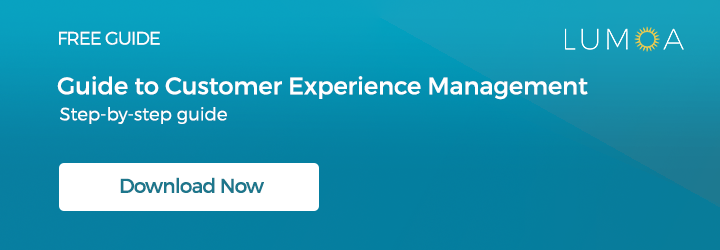How to Create Better Customer Surveys

Last updated on September 28, 2022
In today’s crowded market, it can be difficult to find customers, and growing a business can be an extremely challenging endeavor. But, there’s a huge audience that many companies overlook — their existing customers. In this article, we will share best practices for creating customer surveys.
Existing customers cost less and spend more. In fact, it costs at least five times more to attract a new customer than to keep an existing customer. And they’re much more likely to make a purchase. If you’re looking to make a sale, you have a 60-70% chance with an existing customer versus just 5-20% with a new customer.
So how do you leverage your existing customer base? By making sure you’re listening to them and meeting their needs, which means that you need to learn about and connect with them. And one sure-fire way to do that is by sending customer surveys.
But beware: not all customer surveys are created equal. If the thought of sending surveys (let alone responding to one) makes you cringe, you’re not alone. That’s because many surveys aren’t thoughtfully designed, which makes taking them a painful experience. But it doesn’t have to be that way. Done right, surveys can be almost effortless for your customers and can be an invaluable resource for your business.
Tips for How to Send effective Customer surveys
Keep it Focused
Long, boring customer surveys lead to survey fatigue, which means customers will get bored and drop out before reaching the end. A ten-question blitz won’t be nearly as effective as a shorter one. Keep things to the point and limit your survey only to what’s most important. And don’t ask questions you already know the answer to! If you are sending the survey to their email on file, you already know all of their account details and past orders – they shouldn’t have to fill them in.
On a similar note, be wary of sending too many surveys per customer, as this can also lead to survey fatigue. Customers will get worn out and stop responding, essentially drying up the well of insights that you can get from your surveys.
One exception is when sending satisfaction surveys following interactions with your customer support team. It’s acceptable to send a survey every time a conversation has been closed. These communications were initiated by the customer, and they’ll understand that this is an attempt to ensure there’s nothing else they need from you.
Recommended reading:
How to conduct B2B customer surveys that provide ROI
How to calculate sample size: a simple guide
Choose the Right Question Structure
There are a lot of options for how to structure your questions including multiple-choice, rank order, or closed-ended. It’s important to choose the right one. These closed question types, while useful for organizing large data sets, can be influenced by your own assumptions and can skew your results. Limit them to follow-up surveys or other instances where you’ve already collected a lot of information from your customers and have a very clear understanding of what they want.

Generally, the best place to start is by asking for a rating, then asking one open-ended question as a follow-up. For example, “What’s the reason for your rating?” While it’s important to limit the number of questions in a customer survey, don’t shy away from including this open-ended question. Otherwise, you won’t have the full story about their experience.
Recommended reading:
The difference between transactional surveys and relationship surveys
Survey design best practices
Make it Contextual
If you can, work the customer survey into a channel where the customer is already engaging with you. This makes it all the more seamless for them and allows you to gather data across more touchpoints. For example, to gauge how a customer felt about a specific interaction with your team, send a survey through email, or live chat at the end of the conversation.
To get your customer’s thoughts on things like the design and functionality of your website, you can ask them directly within your website. It’s perhaps even more important than with surveys sent through other channels to keep these ones short. Customers likely have a goal in mind when visiting your website, and it’s best not to keep them from that goal, especially if they intend to make a purchase.
Timing is Key
Another big factor for an effective survey is timing. Before you send one, make sure your customer has had enough time with your product that they can form an opinion. On the other hand, if you wait too long, your customer won’t clearly remember their experience, and their feedback will be less specific and actionable for you.
A common benchmark is 30 days after receiving a product or service, but this might shift slightly depending on the specifics of your business and what you’re trying to learn. A good rule of thumb is to think about whether or not the survey will make sense from the customer’s perspective. For example, if you want to understand how customers feel about your ordering process, then wait until a customer places an order before asking.
NPS: a Customer Survey Standard
You can reach out to your customers and get their opinions on anything you’re interested in knowing more about, like how they feel about your pricing or their top new feature requests.
That said, a gold standard in customer surveying is the Net Promoter Score (NPS) survey. NPS is a very popular measure of loyalty, based on a customer’s likelihood to recommend you to others. And it’s popular for good reason: NPS can predict revenue growth, with leaders growing twice as quickly as their competitors.
NPS asks customers how likely they are to recommend you to others. Based on their response, they’re separated into three categories: promoters, passives, and detractors.
Promoters are your most loyal customers. They’re your advocates who will refer others and keep coming back to do business with you. On the other end, detractors are actively unhappy. Passives are somewhere in the middle, generally happy but easily lured away by competitors.
NPS always customers to rate, on a scale of 0-10, their response to this question: “How likely would you be to recommend us to a friend or colleague?” As recommended earlier, including a comment field here will allow you to gather more information about the driver behind each rating and equip you with the knowledge you need to serve the customer.
Closing the Loop
While it’s important to set up for success by creating an effective survey, it’s even more important to act on the results. That’s the way to truly make sure you’re meeting your customers’ needs and keeping them loyal to your business.
As you collect responses, you’ll uncover individual opportunities to follow up. In the case of NPS, you can reach out to advocates to further encourage them to refer their friends and family. Passives can be converted to advocates if you can connect with them and improve their experience. Detractors are a prime opportunity to fix something that’s gone wrong and turn things around. And these are big opportunities to boost loyalty because, in some cases, customers can become more loyal after a mishap than if it had never happened.
Regardless, always take the time to thank your customers and let them know they were heard. Personal outreach is best, but at the very least, send an automated note that encourages them to reach back out if there’s anything else they’d like to add. This lets customers know that you’re doing something with their feedback and will encourage them to provide more in the future.
From Insights to Action
You’ll also start to notice trending pain points that affect your customer base at large. As new feedback comes in, you can place it into categories based on common themes. This can be time-consuming, but a customer feedback software like Lumoa can help you do it at scale. To dive deeper into issues, you can set up customer interviews to explore their thoughts in more detail. A two-way conversation is a great way to make sure you have a problem clearly defined.
Armed with this information, you can work across your business to better meet your customers’ needs, doing more of what makes them happy and less of what makes them unhappy.
As you make changes, keep an eye on survey responses to see if what you’ve done has made a positive impact. Contact customers who have complained to see if they’re satisfied with the changes you’ve made.
Don’t stop sending surveys — serving your customers is a continuous improvement cycle. Be sure to keep track of responses over time and regularly review commentary. Your business is ever-changing, and so are your customers’ expectations. Stay on top of what customers are saying so you can stay aligned with them. And when you stay aligned with your customers, they’ll reward you with their loyalty, helping your business thrive.

